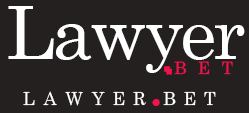Assets Unsuitable for Trust Inclusion
Utilizing a trust as part of your estate planning strategy can offer various advantages, such as bypassing probate, minimizing estate taxes, providing for beneficiaries, and safeguarding assets. However, not all assets are appropriate for placement within a trust. It is crucial to identify which assets should be excluded from a trust to ensure the efficiency and success of your estate plan.
Assets to Avoid Including in a Trust
1. Retirement Savings
Assets like 401(k)s, IRAs, and pensions should not be transferred into a trust. These accounts already have specified beneficiaries that are separate from the trust. By directly naming beneficiaries on the account, you can prevent unnecessary complications and potential tax issues.
2. Life Insurance Plans
Similar to retirement accounts, life insurance policies come with their own designated beneficiaries. It is more practical to designate beneficiaries on the policy itself rather than transferring it to a trust. This ensures a prompt and direct distribution of policy proceeds to the intended recipients.
3. Personal Belongings
Personal items like clothing, jewelry, artwork, and sentimental possessions are generally not suitable for inclusion in a trust. Transferring ownership of these items to a trust can create complexities and may not offer significant advantages. It is preferable to specify bequests in your will for these items to ensure they are distributed according to your wishes.
Advantages of Excluding Certain Assets from a Trust
While trusts can be beneficial for estate planning, there are several reasons why certain assets should be kept out of a trust:
- Direct Beneficiary Designation: Assets like retirement accounts and life insurance policies already have designated beneficiaries, eliminating the need to transfer ownership to a trust.
- Tax Implications: Placing specific assets in a trust could result in tax consequences that can be avoided by keeping them out of the trust.
- Efficiency: Keeping assets such as personal belongings out of a trust can simplify the estate administration process and ensure a smoother asset distribution.
Illustrative Example: The Johnson Family
Upon consultation with their estate planning attorney, Mr. and Mrs. Johnson decided to establish a trust for their estate planning requirements. They were advised that certain assets, such as their retirement savings and life insurance policies, should not be included in the trust. By following this guidance and designating beneficiaries on these accounts, the Johnsons were able to streamline their estate plan and avoid unnecessary complications.
Final Thoughts
When setting up a trust for estate planning purposes, it is crucial to identify which assets should be excluded from the trust. By keeping specific assets out of the trust, you can ensure that your estate plan is tailored to your needs, efficient, and effective. Seeking guidance from a knowledgeable estate planning attorney can assist you in making informed decisions regarding the assets that are most suitable for inclusion in a trust.
5 Assets You Should Never Put in a Trust: A Comprehensive Guide
The Purpose of a Trust
Trusts are powerful estate planning tools that can help you protect your assets and ensure their proper distribution to your beneficiaries. However, not all assets are suitable for inclusion in a trust. In this guide, we will discuss five assets that you should never put in a trust.
1. Retirement Accounts
Retirement accounts, such as 401(k)s and IRAs, are designed to pass directly to your designated beneficiaries upon your death. Placing these assets in a trust can have adverse tax consequences, as they may lose their tax-deferred status. Instead, update your beneficiary designations to align with your estate planning goals.
2. Life Insurance Policies
Life insurance proceeds are also typically distributed directly to beneficiaries outside of probate. Placing a life insurance policy in a trust can complicate the distribution process and may result in additional taxes. Keep life insurance policies separate from your trust to ensure a smooth transfer of assets.
3. Health Savings Accounts (HSAs)
HSAs are intended to cover medical expenses and offer tax advantages. Placing an HSA in a trust can lead to penalties for non-qualified distributions. It is best to designate a beneficiary for your HSA and keep it separate from your trust.
4. Personal Property with Low Financial Value
Items of sentimental value, such as family heirlooms or personal mementos, may not be suitable for inclusion in a trust. Transferring these assets to a trust can complicate matters for your beneficiaries and may not align with your estate planning goals. Consider gifting these items directly to loved ones instead.
5. Jointly-Owned Property
Assets that are jointly owned with rights of survivorship may not need to be included in a trust. These assets will automatically pass to the surviving co-owner upon your death, bypassing the probate process. Review your ownership arrangements and adjust them as needed to align with your estate plan.
Benefits of Avoiding Certain Trust Assets
- Preserves tax advantages for retirement accounts and life insurance policies
- Simplifies the distribution process for certain assets
- Reduces the risk of unintended consequences for beneficiaries
Practical Tips for Trust Planning
- Regularly review and update beneficiary designations
- Consult with a financial advisor or estate planning attorney
- Create a comprehensive estate plan that aligns with your goals
Conclusion
By understanding which assets are best kept out of a trust, you can ensure a seamless estate planning process and protect your assets for future generations. Remember to regularly review your estate plan and make any necessary adjustments to reflect changes in your financial situation or goals.






